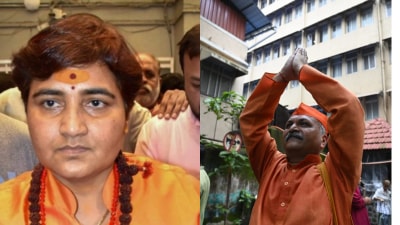Rs 800 cr OctaFx illegal forex trading case: Luxury yacht, minijet boat, two residential buildings among Rs 131 crore properties attached by ED
Funds stolen from the investors were allegedly siphoned out of India in the guise of fake import of services to entities in Spain, Estonia, Russia, Hong Kong, Singapore, the UAE, and the UK.
 One of the properties attached by ED includes the luxury Yacht; “Cherry”, which is an Italian model commercial yacht cruising in the Western Mediterranean.
One of the properties attached by ED includes the luxury Yacht; “Cherry”, which is an Italian model commercial yacht cruising in the Western Mediterranean.The Mumbai unit of the Enforcement Directorate (ED) has provisionally attached properties worth Rs 131.45 crore in Spain belonging to the mastermind behind a multi-crore illegal forex trading platform.
The mastermind of the illegal trading platform, OctaFx, was identified as Pavel Prozorov.
The agency Thursday stated that assets they provisionally attached include movable properties like a luxury yacht, a minijet boat, a luxury car, and immovable properties in the form of two residential buildings in Spain. The luxury yacht is an Italian commercial model.
ED’s money-laundering case is based on a First Incident Report (FIR) registered by the Shivaji Nagar police station in Pune against several individuals for allegedly defrauding investors by falsely promising high returns through the OctaFX forex trading platform.
During the probe, the central agency found that OctaFX is an unauthorised forex broker promoted via the Indian Premier League, social media, and by celebrities.
It laundered funds by collecting investor money through mule accounts in the names of fake e-commerce firms. These shell firms, with dummy directors and manipulated KYCs, accessed payment gateways posing as legitimate merchants. Funds were routed through unauthorised payment aggregators and escrow accounts, adding layers to obscure ownership and transaction purpose, ED said in a statement.
ED added that OctaFX deliberately changed its login URLs and web addresses to obscure its fraudulent operations from investors. The platform manipulated trades to cause significant investor losses while siphoning funds into e-wallets and accounts of fictitious entities.
The anti-money laundering agency’s investigation also revealed that proceeds of crime to the tune of at least Rs 800 crore were generated by OctaFX from its operations in India in just nine months.
Funds stolen from the investors were siphoned out of India in the guise of fake import of services to entities controlled by Prozorov across Spain, Estonia, Russia, Hong Kong, Singapore, the UAE, and the UK, the central agency claimed.
ED has so far seized and attached assets worth more than Rs 296 crore, including 19 properties in Spain owned by Pavel Prozorov.
Two prosecution complaints (equivalent to charge sheets) have been filed against OctaFX and 54 other accused.
Never made false promises of high returns: OctaFx
Reacting to ED’s action, OctaFx released a statement denying all the allegations levelled against the company. OctaFx stated, “As a broker aiming to educate traders and raise their financial awareness, Octa strongly denies any allegations of making false promises of high returns, quick riches, or guaranteed profits. We also don’t engage in any practices that disadvantage traders. Instead, we consistently emphasise that Forex trading requires a knowledgeable and conscious approach. To support our clients in adapting this approach and making informed decisions, we provide comprehensive educational resources, which are publicly available on our website, YouTube channel, and app.”
The statement further said, “In our global operations, we are guided by the interests of our clients while implementing and developing settlement infrastructure. Like most global brokers, we work with various payment systems and service providers. While we integrate these providers for the convenience of our users, it’s important to highlight that we do not control or interfere with their interactions with end-users.
“We strongly reject any claims that we mask payment gateway identities. URLs used in our payment integrations are part of the standard technical setup used by payment service providers, and usually, we are not involved in their construction. Based on the warranties of payment service providers, it is in line with applicable regulations. We aim to ensure that once customers select a payment method, they are redirected to the provider’s official payment page, where their identity is clearly visible. The process is straightforward and follows typical industry practices.”












